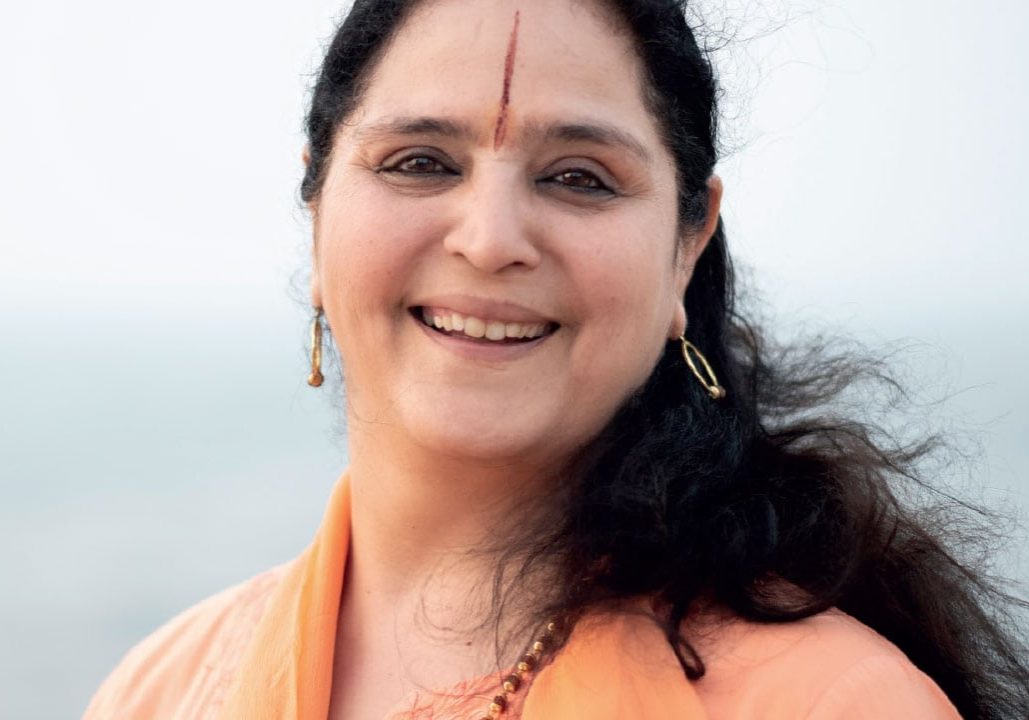
The sutras of Patanjali for yoga
Lighting the path to liberation. By Anandmurti Gurumaa
Reading time: 4 minutes
Yoga means to unite, join, get connected. This unity can be understood at different planes: individual consciousness merging with cosmic consciousness, while individual prana (life force) merging with the cosmic prana is a secular way of comprehending this union.
There are several paths leading to yoga: the path of devotion, the path of knowledge, the path of self-less action. The sutras of Patanjali are the blueprint of the fourth path, the path of meditation, and the goal is the attainment of samadhi (total absorption of the mind). The sage reveals the highest knowledge through pithy precepts called sutras.
The path delineated by Patanjali can be equated to climbing an eight-rung ladder: Code of moral conduct, self-discipline, posture practice, breath practice, withdrawal of the senses, holding attention on one object, meditation and the top-most rung, i.e. samadhi, which is total absorption of the mind.
The key to note is that one cannot skip any step, for the progress is designed to be sequential. Thus, without the practice of ethical codes, one will struggle with implementing self-discipline. And without these two foundational steps, success will be limited if one jumps straight to posture practice. Moreover, learning breath practice will also be challenging. And consequently, the state of meditation gets further away from reach.
Mindfulness and meditation are buzzwords in modern times. There is no dearth of self-help books encouraging people to meditate. And many do give it a try. It is another matter that most of these practices are geared towards mindfulness rather than meditation. The two terms are not synonymous. Mindfulness enhances the mind’s awareness of itself and its surroundings, whereas meditation is about experiencing a state of ‘no mind’.
Although people attain some degree of success in mindfulness, a meditative state remains elusive to most. This is because the preliminary preparatory groundwork has not been done. Codes of moral conduct and self-discipline sound dull compared to the 'glamour' of meditation! But just as without preparing the ground properly, seeds do not germinate; similarly, without making the soil of the mind fertile, meditative practices do not fructify.
This is why we stress the importance of the first two limbs of the eight-fold path of Patanjali yoga. These practices help to purify the mind of greed, lust, selfishness, attachment, hatred, anger and so on. When you practice posture and breathing with such a light mind, you can perfect them with ease and inch closer towards the goal of samadhi.
Also, the moral codes (non-violence, truthfulness, non-stealing, chastity, non hoarding), although universal, must be practiced judiciously considering the people involved, the circumstance, the place and the time. For example, honesty should be preceded by non-violence. If your truthful words can hurt someone's feelings, think twice. To illustrate the need for prudence, I narrate a parable in the context of following the code of non-violence.
Once a snake attended a saint's sermon. The wise man said, 'No one should be violent towards anyone'. The snake brought this precept into practice. A few days later, the saint saw that the poor snake was in a terrible state. People were using it as a piece of rope and flinging it around. But the snake was not retaliating at all. It was lying wounded, bleeding and writhing in pain.
The compassionate saint asked, 'My dear serpent, why are you in such a wretched state?' The snake smirked, 'All thanks to your sermon, sir!' The saint replied gently, 'Dear fellow, I asked you to be non-violent. But did I say you should not protect yourself? Couldn't you have hissed to shoo people away?'
Indeed, one needs to practice the codes wisely.
Lastly, I want to address the question I often get asked in the West: “I am not religious. In fact, I doubt if god exists. So, what is the relevance of these ancient precepts to me?”
Well, you may doubt god's existence, but can you doubt your own? Everyone has the feeling 'I am.' But do you know who or what this 'I' is? Do you know who you really are? Are you just this flesh and blood body? Are you just the mind? Will you really die when the body dies?
The path of yoga is the path of self-inquiry. And thus, it is relevant to all those with a notion of 'I am'. Human beings have been endowed with an evolved intellect. Use this to find out the truth about your own existence. Why? Because this is the only way to be completely free of all suffering and attain lasting bliss. Yoga is the journey from illusory to the real, from darkness to light, from death to immortality. Patanjali sutras light up this very path.




